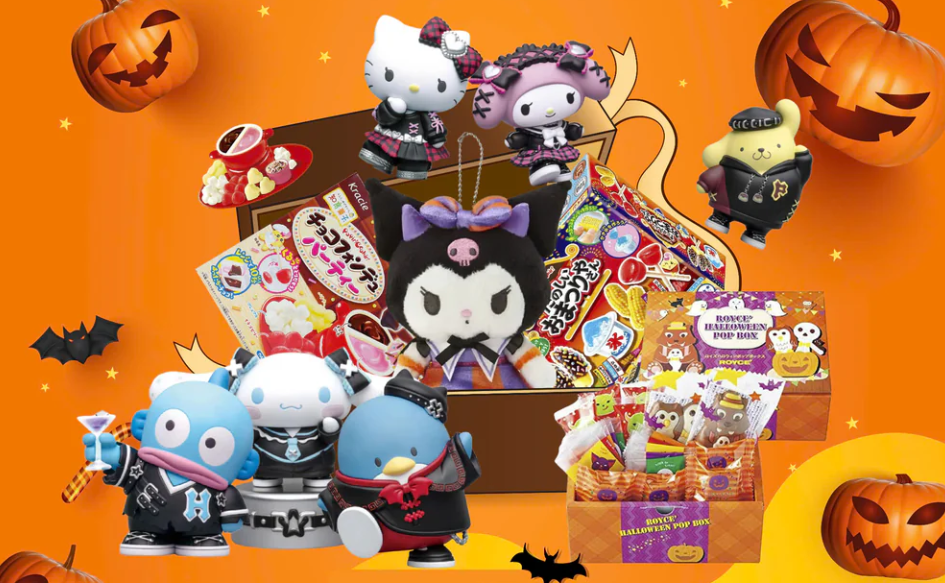The traditional 8-yard kilt stands as an enduring symbol of Scottish heritage and pride, weaving together centuries of history, culture, and craftsmanship. In today’s globalized world, this iconic garment continues to hold a special place, not only in Scotland but also across the globe. Its rich tapestry of symbolism and tradition transcends mere fashion, embodying a deep-rooted connection to Scottish identity and tradition.
The kilt’s significance lies not only in its visual appeal but also in its ability to evoke a sense of belonging and pride among Scots worldwide. Whether worn at formal events or casual gatherings, the traditional kilt serves as a tangible expression of cultural identity, fostering a sense of camaraderie and unity among wearers. As Scotland’s national dress, it represents a link to the past and a celebration of the country’s unique heritage, reinforcing bonds of kinship and community.
Historical Origins
The origins of the traditional 8-yard kilt can be traced back to the Scottish Highlands, where it evolved from the belted plaid, or “feileadh mòr,” worn by Gaelic-speaking clansmen during the late 16th century. Originally a length of woolen cloth gathered and belted around the waist, the garment provided warmth, protection, and versatility in the rugged Highland landscape. Over time, this practical attire transformed into the tailored kilt we recognize today, with its distinctive pleats, tartan patterns, and intricate craftsmanship. The transition from the belted plaid to the modern kilt was influenced by various historical factors, including changes in fashion, social customs, and military regulations. As Highland culture underwent transformation in the wake of the Jacobite uprisings and the Act of Proscription, the kilt emerged as a potent symbol of Scottish identity and resistance. Despite attempts to suppress Highland traditions, the kilt endured, evolving into a cherished emblem of Scottish heritage and pride.
Construction & Design
Crafted from 8 yards of fine woolen tartan fabric, the traditional kilt is meticulously tailored to ensure a perfect fit and drape. The garment typically features knife pleats at the back, sewn down from the waistband to the hip, with the fabric falling gracefully to knee-length at the front. Each kilt is made to measure, taking into account the wearer’s precise measurements and personal preferences. The tartan pattern, comprising intersecting stripes of various colors, holds significance for each clan or family, reflecting their unique heritage and history. The construction of the traditional 8-yard kilt is a labor-intensive process that requires skill, precision, and attention to detail. From selecting the finest quality tartan fabric to hand-sewing the pleats and finishing touches, every step is carried out with care and craftsmanship. Experienced kiltmakers draw on centuries-old techniques passed down through generations, ensuring that each kilt is a work of artistry and tradition. The result is a garment that not only looks impeccable but also feels comfortable and dignified to wear.
Symbolism & Identity
Beyond its aesthetic appeal, the traditional 8-yard kilt serves as a powerful symbol of Scottish identity and pride. For many Scots, wearing the kilt is more than just donning a piece of clothing; it is a reaffirmation of their cultural heritage and ancestral roots. The tartan patterns woven into the fabric carry deep meaning, representing the bonds of kinship and belonging that unite Scottish clans and families. Whether worn at weddings, ceilidhs, or Highland games, the kilt symbolizes a connection to Scotland’s past and a celebration of its enduring traditions. The symbolism of the kilt extends beyond clan affiliations to encompass broader themes of national pride and solidarity. As Scotland’s national dress, it embodies the spirit of the Scottish people and their resilience in the face of adversity. Whether worn by Scots at home or abroad, the kilt serves as a visible expression of cultural pride and identity, fostering a sense of unity and belonging among wearers. Its distinctive appearance and rich symbolism make it instantly recognizable as a symbol of Scotland’s unique heritage and traditions.
Cultural Significance
In Scotland, the traditional 8-yard kilt remains an integral part of ceremonial dress and formal occasions. From weddings and graduations to clan gatherings and military ceremonies, the kilt is worn with pride, signaling respect for tradition and heritage. Its timeless appeal transcends generations, with many Scots passing down kilts as cherished heirlooms from father to son. Beyond Scotland’s borders, the kilt has also gained popularity as a symbol of Scottish culture, often worn at international events and festivals to showcase Scotland’s rich heritage to the world. The cultural significance of the kilt is evident in its role as a symbol of Scottish identity and tradition. Whether worn by members of the Scottish diaspora or enthusiasts from other cultural backgrounds, the kilt serves as a tangible link to Scotland’s past and a celebration of its enduring legacy. Its presence at cultural events and gatherings reinforces Scotland’s cultural identity on the global stage, fostering connections and promoting understanding across diverse communities. In this way, the kilt continues to play a vital role in preserving and promoting Scottish culture and heritage for future generations.
Contemporary Adaptations
While rooted in tradition, the 8-yard kilt has also evolved to meet the demands of modern life. Today, kilts are available in a wide range of fabrics, styles, and designs, catering to diverse tastes and occasions. From lightweight kilts for summer wear to hybrid utility kilts with pockets and detachable aprons, there is a kilt to suit every preference. Contemporary fashion designers have also put their own spin on the classic garment, incorporating tartan motifs into contemporary clothing and accessories, ensuring that the spirit of the kilt remains alive and vibrant in the 21st century.
The evolution of the kilt reflects changing attitudes towards tradition and fashion in contemporary society. While the basic elements of the garment remain unchanged, innovations in materials and construction techniques have made the kilt more versatile and accessible than ever before. Modern kilts offer a balance of style and functionality, allowing wearers to express their individuality while still honoring the traditions of Scottish culture. Whether worn for formal occasions or everyday wear, the kilt continues to captivate and inspire people of all ages and backgrounds, ensuring its enduring popularity in the modern world.
Global Appeal
The allure of the traditional 8-yard kilt extends far beyond the shores of Scotland, captivating people around the world with its timeless elegance and distinctive charm. Whether worn by Scots expatriates proudly displaying their heritage or enthusiasts drawn to its romantic associations with Scottish culture, the kilt has become a global phenomenon. From New York to Tokyo, kilted events and Highland gatherings attract participants and spectators from diverse backgrounds, united by their shared admiration for this iconic garment and the traditions it embodies.
The global appeal of the kilt is a testament to its enduring popularity and cultural significance. From its humble origins in the Scottish Highlands to its widespread adoption on the international stage, the kilt has transcended geographical and cultural boundaries to become a symbol of Scottish identity and pride worldwide. Its presence at cultural festivals, Highland games, and other events serves to promote awareness and appreciation of Scottish culture, fostering connections and building bridges between different communities. In an increasingly interconnected world, the kilt continues to serve as a powerful symbol of unity and cultural exchange, bringing people together across continents and generations.
Challenges & Controversies
Despite its enduring popularity, the traditional 8-yard kilt has not been immune to controversy or criticism. Debates have arisen over issues such as cultural appropriation, particularly when non-Scots wear kilts without understanding or respecting their cultural significance. Additionally, questions have been raised about the authenticity of kilts mass-produced overseas, with some purists arguing that only kilts made in Scotland using traditional methods can truly capture the spirit of the garment. However, many believe that the kilt’s ability to evolve and adapt is essential for its survival in an ever-changing world.
The challenges and controversies surrounding the kilt highlight the complexities of cultural identity and representation in contemporary society. While the kilt holds deep cultural significance for Scots and enthusiasts alike, its widespread adoption and commercialization have raised concerns about cultural authenticity and respect. As interest in Scottish culture continues to grow worldwide, it is essential to strike a balance between honoring tradition and promoting cultural understanding. By engaging in dialogue and collaboration, stakeholders can work together to address these challenges and ensure that the legacy of the kilt is preserved with integrity and respect.
Preserving Tradition
In an effort to safeguard Scotland’s cultural heritage, initiatives have been launched to promote the craftsmanship and authenticity of traditional kilts. Organizations such as the Scottish Tartans Authority work to preserve and register tartan designs, ensuring that each pattern is authentic and historically accurate. Similarly, skilled kiltmakers continue to uphold centuries-old techniques, handcrafting kilts with meticulous attention to detail and quality. By supporting local artisans and embracing traditional methods, Scots and enthusiasts alike can play a vital role in preserving the legacy of the 8-yard kilt for future generations.
The preservation of tradition is essential for ensuring the continued relevance and authenticity of the kilt in the modern world. By honoring the craftsmanship and expertise of skilled kiltmakers, we can ensure that each garment is a true reflection of Scottish heritage and tradition. Initiatives that promote education and awareness about the history and significance of kilts can also help to foster appreciation and respect for this iconic garment. Through these efforts, we can ensure that the kilt remains a symbol of Scottish pride and identity for generations to come, embodying the enduring spirit of Scotland’s rich cultural heritage.
Conclusion
In conclusion, the traditional 8-yard kilt stands as a timeless symbol of Scottish pride and identity, embodying centuries of history, culture, and tradition. From its humble origins in the Scottish Highlands to its global appeal in the 21st century, the kilt continues to captivate and inspire people around the world. As Scotland’s most iconic garment, the kilt serves as a tangible link to the past, a celebration of heritage, and a source of enduring pride for Scots everywhere. By embracing the spirit of the kilt and preserving its traditions, we ensure that this cherished symbol of Scottish culture will continue to thrive for generations to come.





